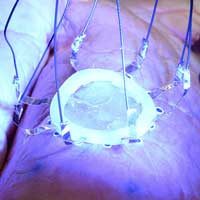 In groundbreaking new research, mechanical engineers and computer scientists have developed a 3D printing technique that uses motion capture technology, similar to that used in Hollywood movies, to print electronic sensors directly on organs that are expanding and contracting.
In groundbreaking new research, mechanical engineers and computer scientists have developed a 3D printing technique that uses motion capture technology, similar to that used in Hollywood movies, to print electronic sensors directly on organs that are expanding and contracting.
Wednesday, June 17, 2020
New discovery allows 3D printing of sensors directly on expanding organs
 In groundbreaking new research, mechanical engineers and computer scientists have developed a 3D printing technique that uses motion capture technology, similar to that used in Hollywood movies, to print electronic sensors directly on organs that are expanding and contracting.
In groundbreaking new research, mechanical engineers and computer scientists have developed a 3D printing technique that uses motion capture technology, similar to that used in Hollywood movies, to print electronic sensors directly on organs that are expanding and contracting.
Can metallic metasurfaces be used for terahertz nanofilm sensing?
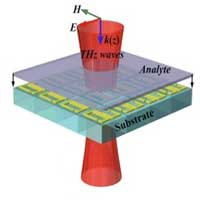 Scientists have proposed a toroidal dipole (TD) bound states in the continuum (BIC) inspired Fano resonance metasurface, exhibiting both TD and BIC feature in the same structure.
Scientists have proposed a toroidal dipole (TD) bound states in the continuum (BIC) inspired Fano resonance metasurface, exhibiting both TD and BIC feature in the same structure.
Self-powered 'paper chips' could help sound an early alarm for forest fires
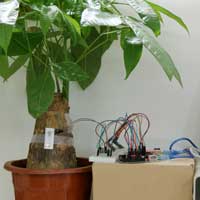 Researchers have developed self-powered 'paper chips' that sense early fires and relay a signal.
Researchers have developed self-powered 'paper chips' that sense early fires and relay a signal.
Macroscopic quantum interference in an ultra-pure metal
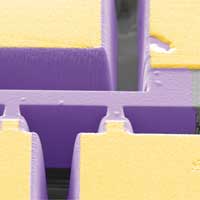 Although the subtle laws of quantum mechanics, that is, wave mechanics, ultimately govern all the processes of electron transportelectrons in solids, their wave-like nature of the electrons is not often apparent to the casual observer. A classical picture of electrons as solid particles goes surprisingly far in explaining electric currents in metals.
Although the subtle laws of quantum mechanics, that is, wave mechanics, ultimately govern all the processes of electron transportelectrons in solids, their wave-like nature of the electrons is not often apparent to the casual observer. A classical picture of electrons as solid particles goes surprisingly far in explaining electric currents in metals.
Building better bridges for moving energy with DNA
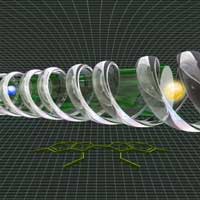 Precisely positioning molecules on wire-like DNA assemblies allows high efficiency energy transfer.
Precisely positioning molecules on wire-like DNA assemblies allows high efficiency energy transfer.
LEGO construction of nanoparticle assemblies
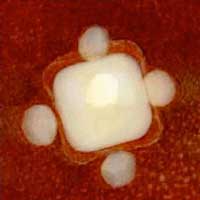 Designing new levels of complex architectures using DNA strands and nanoparticles.
Designing new levels of complex architectures using DNA strands and nanoparticles.
Nanosponges could intercept coronavirus infection
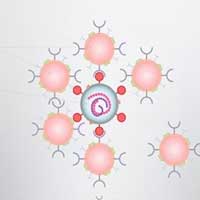 Nanoparticles cloaked in human lung cell membranes and human immune cell membranes can attract and neutralize the SARS-CoV-2 virus in cell culture, causing the virus to lose its ability to hijack host cells and reproduce.
Nanoparticles cloaked in human lung cell membranes and human immune cell membranes can attract and neutralize the SARS-CoV-2 virus in cell culture, causing the virus to lose its ability to hijack host cells and reproduce.
Using tiny electrodes to measure electrical activity in bacteria
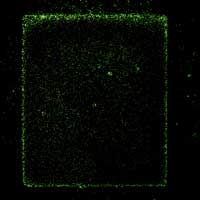 Scientists have developed an organic electrochemical transistor that they can use to measure and study in fine detail a phenomenon known as extracellular electron transfer in which bacteria release electrons.
Scientists have developed an organic electrochemical transistor that they can use to measure and study in fine detail a phenomenon known as extracellular electron transfer in which bacteria release electrons.
New nanoparticle drug combination for atherosclerosis
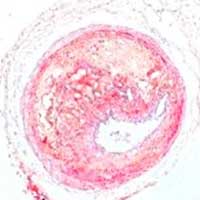 Physicochemical cargo-switching nanoparticles can help significantly reduce cholesterol and macrophage foam cells in arteries, which are the two main triggers for atherosclerotic plaque and inflammation.
Physicochemical cargo-switching nanoparticles can help significantly reduce cholesterol and macrophage foam cells in arteries, which are the two main triggers for atherosclerotic plaque and inflammation.
Energy storage using oxygen and MOFs to boost battery performance
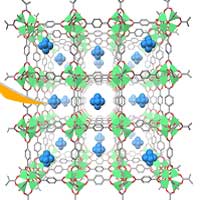 Researchers have presented a novel electrode material for advanced energy storage device that is directly charged with oxygen from the air.
Researchers have presented a novel electrode material for advanced energy storage device that is directly charged with oxygen from the air.
Physicists develop a new theory for Bose-Einstein condensates
 Bose-Einstein condensates are often described as the fifth state of matter: At extremely low temperatures, gas atoms behave like a single particle. The exact properties of these systems are notoriously difficult to study.
Bose-Einstein condensates are often described as the fifth state of matter: At extremely low temperatures, gas atoms behave like a single particle. The exact properties of these systems are notoriously difficult to study.
Subscribe to:
Comments (Atom)

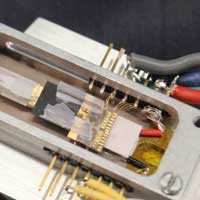 A project that revolutionizes photonic systems.
A project that revolutionizes photonic systems.